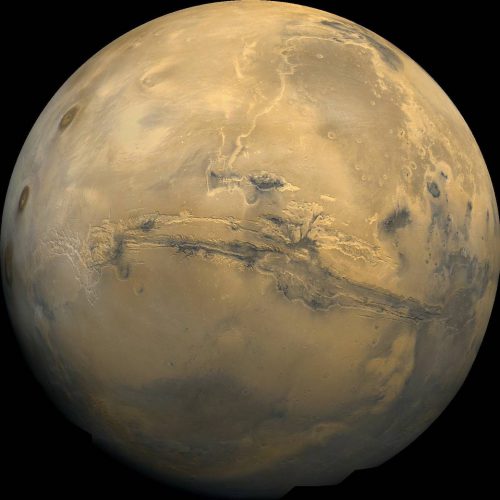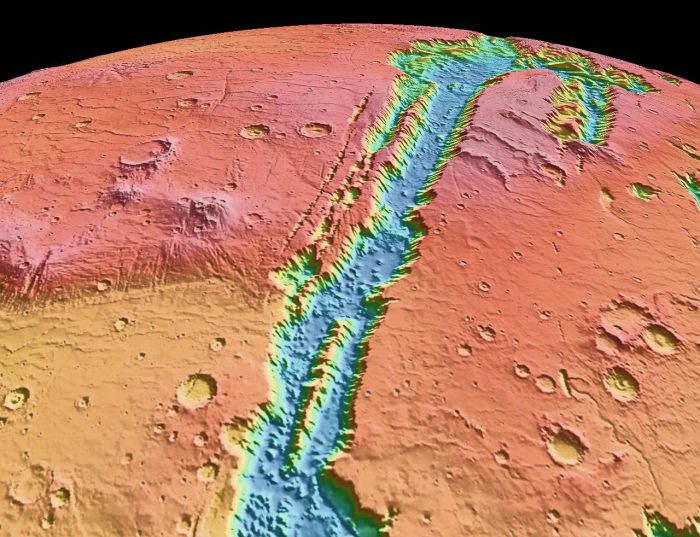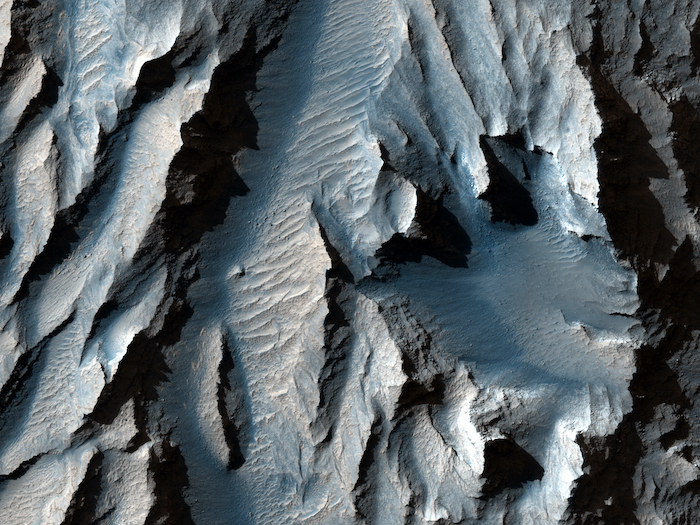Here on Earth, the Grand Canyon is known as one of the planet's great spectacles. Running 446 km (277 miles) long, spanning as much as 29 km (18 miles) wide, and hitting depths of 1,857 m (6,093 feet) is really something to behold.
But it's a pothole compared to Valles Marineris on Mars. This monstrosity is the largest canyon in the solar system. Check it out!

This image of Mars shows the incredible size of Valles Marineris (yes, all of those markings are a part of the canyon!). (NASA)
It stretches about 4,000 km (2,500 miles)—that's one quarter of the entire circumference of (or distance around) Mars. It's also about as long as the United States is wide and about 137 times the length of the Grand Canyon.
Whoa.
Last month, NASA released some spectacular new images of Valles Marineris, and we'd love to share them with you!
Up close and personal with a behemoth

Getting up close with a small section of the massive Valles Marineris. (NASA/JPL/University of Arizona)
These exceptional high resolution images were taken by the HiRISE (High Resolution Imaging Science Experiment) that is on board the Mars Reconnaissance Orbiter satellite. (We've shown HiRISE images before here and here). The pictures show a surface that is covered by scars and wind-blown sediment (settled dust and sand). It's the sort of detail that really gets lost in the larger pictures of the entire planet.
Put the two types of images together and you can get a sense of just how mindblowing Valles Marineris is. Just compare the HiRISE pics to this one below where the canyon seems to stretch on forever.

This coloured image—red and orange is higher and blue is lower—shows the depth and size of the canyon compared to the rest of the planet. (NASA)
How did it form?
Though breathtaking, one thing these images don't settle is how did the canyon form? On Earth, the Grand Canyon was formed by millions of years of erosion by the Colorado River. But that wasn't the case on Mars.
The best guess that scientists have? Valles Marineris was formed by a massive split in Mars' crust that hardened over without ever fully sealing itself over. That seems almost unbelievable ... except when you consider that the largest volcano in the solar system, Olympus Mons, is also on, you guessed it, Mars.
We suppose that no matter how cool and calm it may seem now, the Red Planet certainly must have had a wild past!
 The Tithonium Chasma is a section of Valles Marineris, an enormous canyon on the surface of Mars that is almost as long as the width of the United States. (NASA/JPL/University of Arizona)
The Tithonium Chasma is a section of Valles Marineris, an enormous canyon on the surface of Mars that is almost as long as the width of the United States. (NASA/JPL/University of Arizona)









